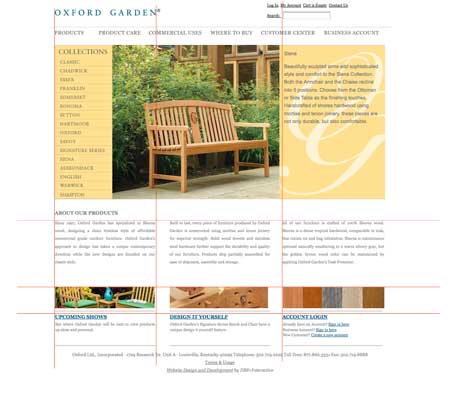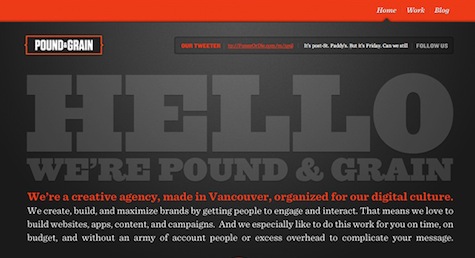Layout Principles Quiz

In the course and as part of the process of developing webpages, layout is very important. We have different layout principles that guide and control the setting up of web layouts. How good are you with layouts? Find out below.
- 1.
What is a rule to follow when working with alignment?
- A.
Use many different alignments throughout a web page or design.
- B.
Choose one alignment and stick with it.
- C.
Change alignment several times throughout a page.
- D.
Choose your alignment randomly, without a reason or consideration for your design.
Correct Answer
B. Choose one alignment and stick with it.Explanation
When working with alignment, it is important to choose one alignment and stick with it. Consistency in alignment creates a sense of order and professionalism in a web page or design. Using many different alignments can make the layout appear chaotic and confusing to the viewer. Changing alignment several times throughout a page can also disrupt the flow and coherence of the design. Therefore, selecting one alignment and maintaining it throughout the project helps to create a visually pleasing and cohesive design.Rate this question:
-
- 2.
What is a rule to follow when working with proximity?
- A.
Arrange like things near each other, and keep things that are not related apart from each other.
- B.
Place items in the corners and middle of the page.
- C.
Put items all over the design with no concept of relative items.
- D.
Place things too close together so that material is not easy to read or understand.
Correct Answer
A. Arrange like things near each other, and keep things that are not related apart from each other.Explanation
The rule to follow when working with proximity is to arrange like things near each other, and keep things that are not related apart from each other. This helps create visual organization and allows viewers to easily understand the relationships between different elements.Rate this question:
-
- 3.
What is a rule to follow when working with repetition?
- A.
Don't repeat anything on a web page or design.
- B.
Repeat things so often that you drive your audience crazy.
- C.
Repeat elements such as colors, fonts, and logos for consistency.
- D.
Repeat every single thing on your web page or design at least once.
Correct Answer
C. Repeat elements such as colors, fonts, and logos for consistency.Explanation
When working with repetition, it is important to repeat elements such as colors, fonts, and logos for consistency. This ensures that the design or web page maintains a cohesive and unified look. By repeating these elements, it helps to establish a visual identity and reinforce branding. Consistency in design elements also enhances user experience and makes the content easier to navigate and understand.Rate this question:
-
- 4.
What is a rule to follow when working with contrast?
- A.
Use contrast for emphasis by placing things that are different next to each other.
- B.
Do not use contrast--it is a bad idea.
- C.
Use objects that are somewhat similar to create contrast.
- D.
Use contrast to distract your audience.
Correct Answer
A. Use contrast for emphasis by placing things that are different next to each other.Explanation
When working with contrast, it is important to use it for emphasis by placing things that are different next to each other. This means that by juxtaposing contrasting elements, such as colors, shapes, or sizes, the differences between them become more apparent and stand out. This can help draw attention to specific elements or create visual interest in a design. By following this rule, one can effectively utilize contrast to make important elements stand out and create a visually appealing composition.Rate this question:
-
- 5.
What principle does this image illustrate?
- A.
Contrast
- B.
Repetition
- C.
Alignment
- D.
Proximity
Correct Answer
C. AlignmentExplanation
This image illustrates the principle of alignment. Alignment refers to the arrangement of elements in a design so that they are visually connected and create a sense of order and unity. In this image, the elements are aligned in a straight line, creating a clear and organized composition.Rate this question:
-
- 6.
What principle does this illustrate?
- A.
Contrast
- B.
Repetition
- C.
Alignment
- D.
Proximity
Correct Answer
A. ContrastExplanation
This question asks about a principle that is illustrated. Among the options provided, contrast is the most appropriate principle to explain the given answer. Contrast refers to the use of opposing elements, such as color, size, or shape, to create visual interest and emphasize differences. In this context, the principle of contrast could be applied to highlight the distinction between two or more elements or concepts.Rate this question:
-
- 7.
What principle does this illustrate?
- A.
Contrast
- B.
Repetition
- C.
Alignment
- D.
Proximity
Correct Answer(s)
C. Alignment
D. ProximityExplanation
This question is asking about the principle that is illustrated by the given options. Alignment and proximity are both principles of design that contribute to organizing and structuring elements on a page. Alignment refers to the arrangement of elements along a common axis, creating a sense of order and unity. Proximity refers to the grouping of related elements together, making it easier for the viewer to understand the relationships between them. Therefore, the correct answer of Alignment and Proximity illustrates the principles of design that help in organizing and structuring elements effectively.Rate this question:
-
- 8.
What principle does this illustrate?
- A.
Contrast
- B.
Repetition
- C.
Alignment
- D.
Proximity
Correct Answer
B. RepetitionExplanation
This question is asking about the principle that is illustrated by the given answer choice, which is "Repetition". Repetition is a design principle that involves repeating visual elements such as colors, shapes, or patterns to create a sense of unity and consistency in a design. It helps to reinforce the overall message or theme and creates a visual rhythm that guides the viewer's eye.Rate this question:
-
Quiz Review Timeline +
Our quizzes are rigorously reviewed, monitored and continuously updated by our expert board to maintain accuracy, relevance, and timeliness.
-
Current Version
-
Mar 21, 2023Quiz Edited by
ProProfs Editorial Team -
Nov 04, 2013Quiz Created by
Lcook353
- Atom Quizzes
- Atomic Theory Quizzes
- Chemical Bonding Quizzes
- Chemical Compound Quizzes
- Chemical Reaction Quizzes
- Chemistry Practice Quizzes
- Clinical Chemistry Quizzes
- Electrolysis Quizzes
- Functional Group Quizzes
- Gas Quizzes
- General Chemistry Quizzes
- IBSL Chemistry Quizzes
- Medicinal Chemistry Quizzes
- Molecule Quizzes
- Rate Of Reaction Quizzes
- Reaction Quizzes
- Soap Quizzes
- Solution And Mixture Quizzes
- State Of Matter Quizzes
- Stoichiometry Quizzes
 Back to top
Back to top





.jpg)